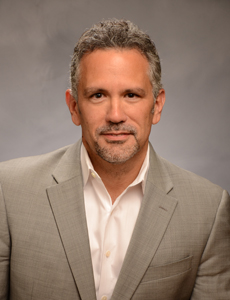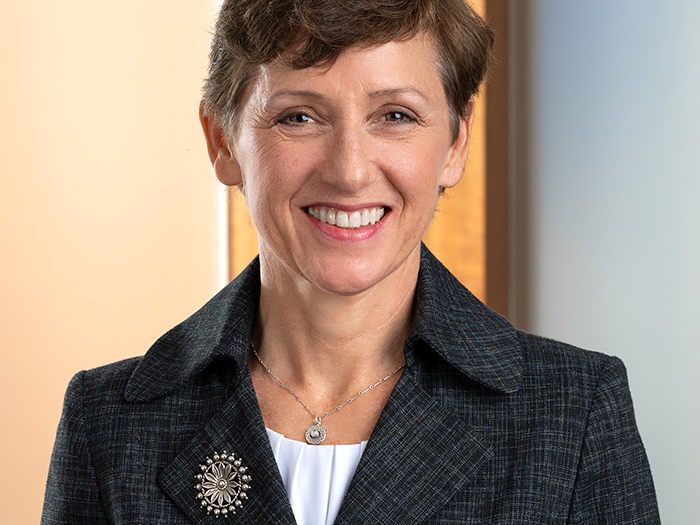7 Ways to Absolutely Crush Your Next Hard Market Renewal

Something is happening in the commercial insurance business that hasn’t happened in more than a decade. It goes by the moniker of a “hard market.”
For years, fed by ample capacity and aggressive pricing, buyers of commercial insurance were treated, year after year, to lower premium prices. And as each year went by, those price reductions were compounding.
Take five percent off in year one, take another five percent off in year two, and so on and so on. It doesn’t take an actuary to point out that over time commercial insurance carriers were pricing business at rates that were bound to lose them money.
Now things are changing. Carriers can no longer afford to keep cutting prices and are raising them; to use industry terminology, the market is “hardening.”
This may come as a shock to many insurance buyers who were coasting along on a soft market. But it’s important to point out that this market shift, this “hardening market” is absolutely essential for the health of commercial insurance businesses.
“I think, for many buyers, they think that what’s going on is an opportunistic endeavor on the part of many companies, but in reality, it’s remedial,” said David Perez, chief underwriting officer, North America, for Liberty Mutual.
“This is something that is needed and that should make it more impersonal for any buyer,” Perez said.
Jeffrey Beauman, a vice president and chief underwriter for FM Global, said renewals this year are rife with stories of buyers who are having difficulties putting insurance programs together due to the relatively sudden, and in some cases severe, price increases they are seeing.
“From an insurance company perspective, there needed to be a reversal of that long-term trend. I think it’s a natural cyclical item that nobody who’s been in the business for any length of time, customers or underwriters, would be surprised that at some point the market will reverse itself,” Beauman said.
That being said, underwriters and brokers say they are numerous things buyers of insurance can do to manage this shift and put together a commercial insurance program that more than meets their needs.
1) Understand and Communicate About the Cycle
Buyers of insurance report to CFOs and boards, and according to experts that R&I talked to, it’s crucial that risk managers understand that they are in the midst of a turning market cycle and communicate that to all stakeholders.
“The accuracy of pre-renewal premium information is extremely important to our clients. They must present precise information to their Boards/internal committees in order to budget correctly for these costs,” said Lainee Beigel, a Philadelphia-based client executive and management liability resource for RCM&D.
In this rapidly turning market, underwriters might tell a buyer 60 days out from renewal that the price increase will be 10 %, and then come back 30 days later and tell them the price increase is going to be 25 %.
It’s very important for insurance buyers to communicate that not only is the market turning, but that underwriters might be under pressure from upper management or actuaries to ask for price increases on a much shorter turnaround.
“In this market I would caution against advising clients of flat renewal premiums. If brokers over promise and under deliver, this can lead to some difficult conversations, and could potentially leave the client in a difficult spot internally,” Beigel said.
2) Start Early, Real Early
The process of going through renewals as the market turns also mandates that buyers start working with their brokers and management teammates much earlier than normal to make sure they are crafting the right narrative for underwriters and setting the right expectations for their corporate treasury.
“My advice would be if a client hasn’t yet come up on their renewal, if their broker hasn’t advised them to be aware of it, they should start early in the process,” FM Global’s Beauman said.
“Particularly if it’s a challenging piece of business to place, they have some loss traffic, or they have enjoyed some particularly aggressive terms,” Beauman said.
“The underwriters that are looking at the renewal will be coming at it from the broader perspective of needing to make a correction, and if your book of business, the risk profile that you’re presenting is going to stand out, you’re going to want to start early enough to understand what you might need to do to secure the coverage that you believe you need,” Beauman said.
“Your broker should make every effort to get ahead of a renewal. This way, if anything substantive changes in terms of pricing or coverage, you have ample time to advise your client, market and/or negotiate terms,” said RCM&D’s Beigel.
Which leads us to another point.
3) Hold Your Broker’s Feet to the Fire
This turning market is not only a time to start on renewals earlier, and stay informed on industry trends. It’s also a time to remind your broker that they are your chief advocate, and this is their time to shine.
“As brokers, we must strongly advocate on behalf of our clients. This requires listening to client feedback and concerns, and sharing them with carriers. As a risk manager, you can and should take an active role alongside your broker to make sure you obtain best in class coverage and pricing for your company,” Beigel said.
“Make sure that you are communicating with your broker and getting the broker’s perspective on the market for that particular line of business,” said Liberty Mutual’s Perez.
“You should also push your brokers and all of your resources to tell you the clear story,” Perez added.
“I think oftentimes we’ve seen situations where brokers, they try to communicate average rate increases, or they try to massage the message a little bit,” he said.
“Make sure your broker is telling you the straight story, what they’ve seen in the last 30 days, not what they’ve seen over the past six months,” Perez said.
4) Meet With as Many Insurance Markets as Possible
As carriers work to get their books balanced properly, there is going to be a lot of shifting in the markets. A carrier that wrote commercial auto or medical malpractice for years might not be writing it anymore.
As important as long-term relationships with carriers are, and they can be beneficial, this is not a time to take a passive approach to existing carrier relationships, or to investigating new ones.
“Try to meet with as many markets as you can,”said Liberty Mutual’s Perez.
The more you talk to different markets, the better idea you will have of what is motivating carriers to come out with price, terms and conditions changes.
“That way you can get perspective on what their concerns for a particular line of business are, what is really driving their need to remediate a problem, their need to get rate. Why do they need it, and how does that pertain to the class, the line of business and your particular risk?” Perez added.
5) Transparency Rules
Transparency is important, not just in the granularity of the information that flows from the carrier, to the broker and on to the buyer. It is also incumbent on the buyer to be as transparent as possible with the carrier, not just on loss histories, but on strategic initiatives.
As for claims, “you want to be able to be very, very clear on what actions you have taken if you have had claims in the past,” said FM Global’s Beauman.
“What actions have you taken that will prevent those losses in the future? And of course if your carrier has made suggestions about what you should be doing to perhaps improve your risk, then you want to be able to communicate clearly where you are in the budget process, of getting those improvements done and when you expect them to be completed,” he added.
“We believe the majority of losses are preventable and of course we’re constantly talking with our clients about wanting to make sure that their risk profile is as mitigated as possible in order to keep their business as resilient as possible,” Beauman said.
Another piece of this underwriting puzzle centers on what company’s future plans are.
“With companies today, it’s not unusual for them to be going through a variety of mergers and acquisitions,” said Beauman.
“Make sure that your underwriter has some visibility, to the extent that you can share it, visibility into your strategic plans, particularly for those locations or those risks that would be causing the underwriter some challenge,” he added.
“If you have a location in a flood zone, for example, and you’re thinking of selling it in the next several months, let the underwriter be aware of that.”
If the underwriter knows that a flood risk that they’ve been carrying for years, might move off their books as the result of a merger, that’s good information.
“In general I would say be transparent about your future strategies so the underwriter can visualize how your risk will be changing going forward,” Beauman added.
6) Get on that Phone. Get to That Meeting.
Another area where recent past practices won’t do the trick any more is in the degree to which the buyer is involved in renewal meetings.
Through 10 years of a soft market, the job wasn’t that hard. The carriers kept yielding to lower price requests and the broker walked away looking like a hero.
Risk managers may have taken a more passive approach. That won’t cut it now.
“Relationships play a big role in navigating difficult renewals,” said RCM&D’s Beigel.
“The strength of broker/underwriter and insured /underwriter relationships are always important, but even more so in a tough market. Setting up calls so underwriters can hear directly from their insureds, can be helpful. Sometimes hearing insureds explain the reasoning behind their concerns makes it harder to say “no,” she said.
“Moreover, I am big believer that relationships should extend beyond email and phone discussions,” she continued.
“As a broker, don’t count out face to face meetings between clients and their underwriting teams. I find facilitating these meetings aids in solidifying the relationship for future renewals. Not only are clients appreciative of the time carriers take to meet with them, but once you put a face with a name, it can be a good negotiation tool,” she said.
“That way, we as the broker can show you that we are advocating, from our perspective,” she added.
“But it also helps when you’re hearing from the insured what they need and why they need it and why they think this percentage increase is inappropriate for their renewal,” she said.
Even better? A face to face meeting.
“We just recently won a piece of business from a much larger company and one of the reasons was I said to them, ‘Oh, let’s have your cyber underwriters come and meet you.’ And they said, ‘What do you mean? They do that?’ So, yes, they do that. Build the relationship so that they see your face,” she said.
She’s heard from underwriters that meeting the insured made a big difference.
“I really liked them. They gave me a lot of good information. I remember the meeting, we can go down a couple of points here,” is commentary Beigel has heard from underwriters.
7) Remember, Price Isn’t Everything
It may be hard to keep one’s perspective on this, when pricing in some lines, particularly management liability and property, is increasing by robust double digits. But the same premise holds true in a hard market and a soft market. Merely moving your business to the lowest cost carrier is not necessarily in your organization’s best interests.
“Focus on carriers that specialize in your business,” said Liberty Mutual’s Perez.
“You want to deal with people who can talk the talk and know your business, really have the ability to differentiate in your class,” Perez added.
“I would say force your markets to be competitive, but don’t focus on moving to the lowest cost provider. What we’re seeing now, especially in the commercial automotive market, is not going away for a while. The market needs to reset and this is a long-tail business,” Perez said.
“We don’t know if this will last 18 months or three to four years, so partnership is key. Everybody has to be competitive to a certain extent, but your partners should not have to beat the lowest price. In the end, I don’t think that is a very good long-term strategy.” &












